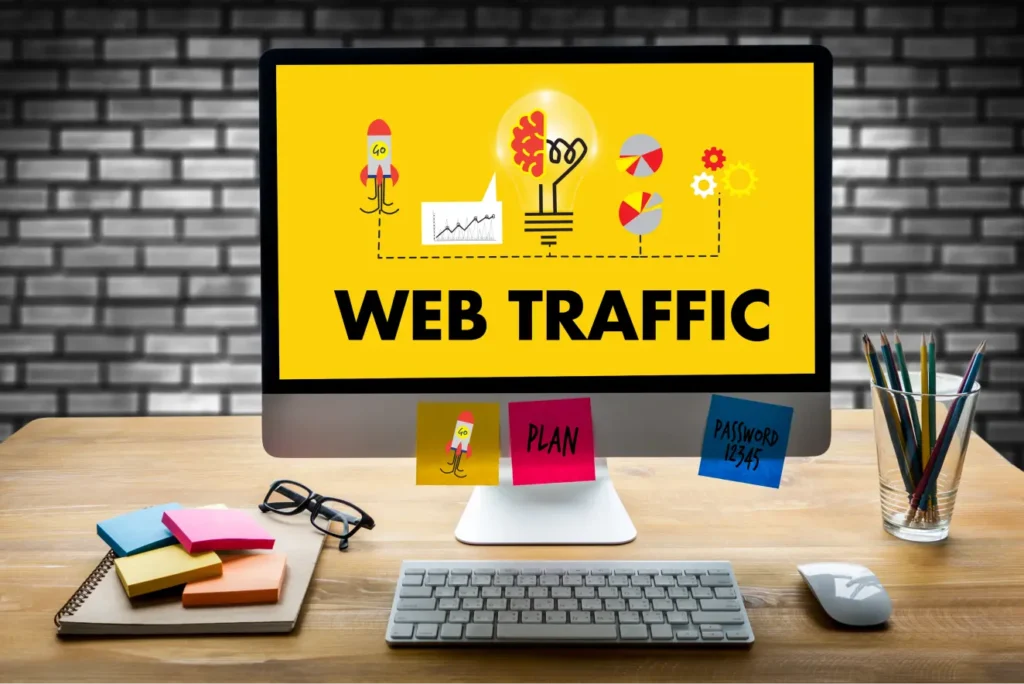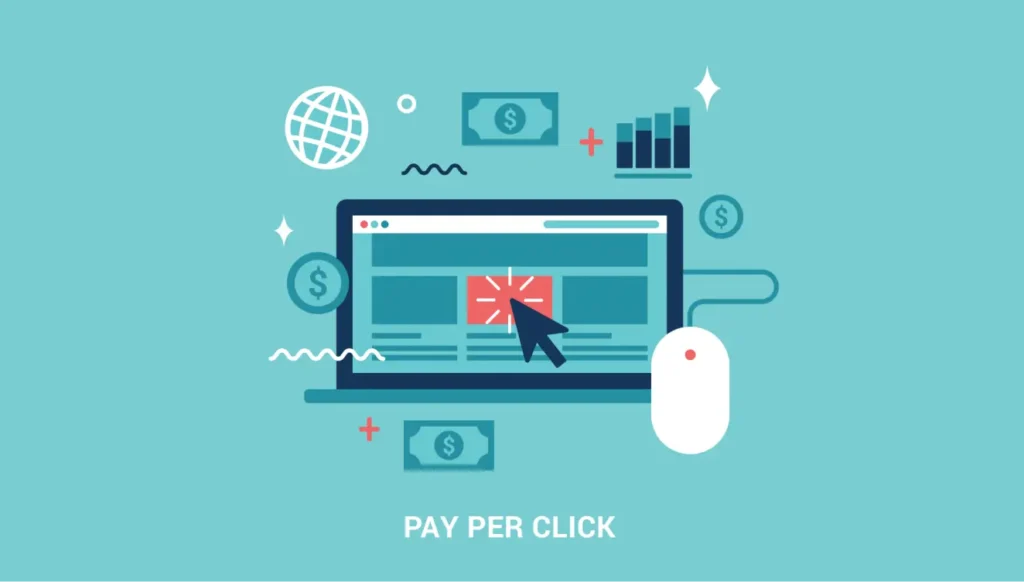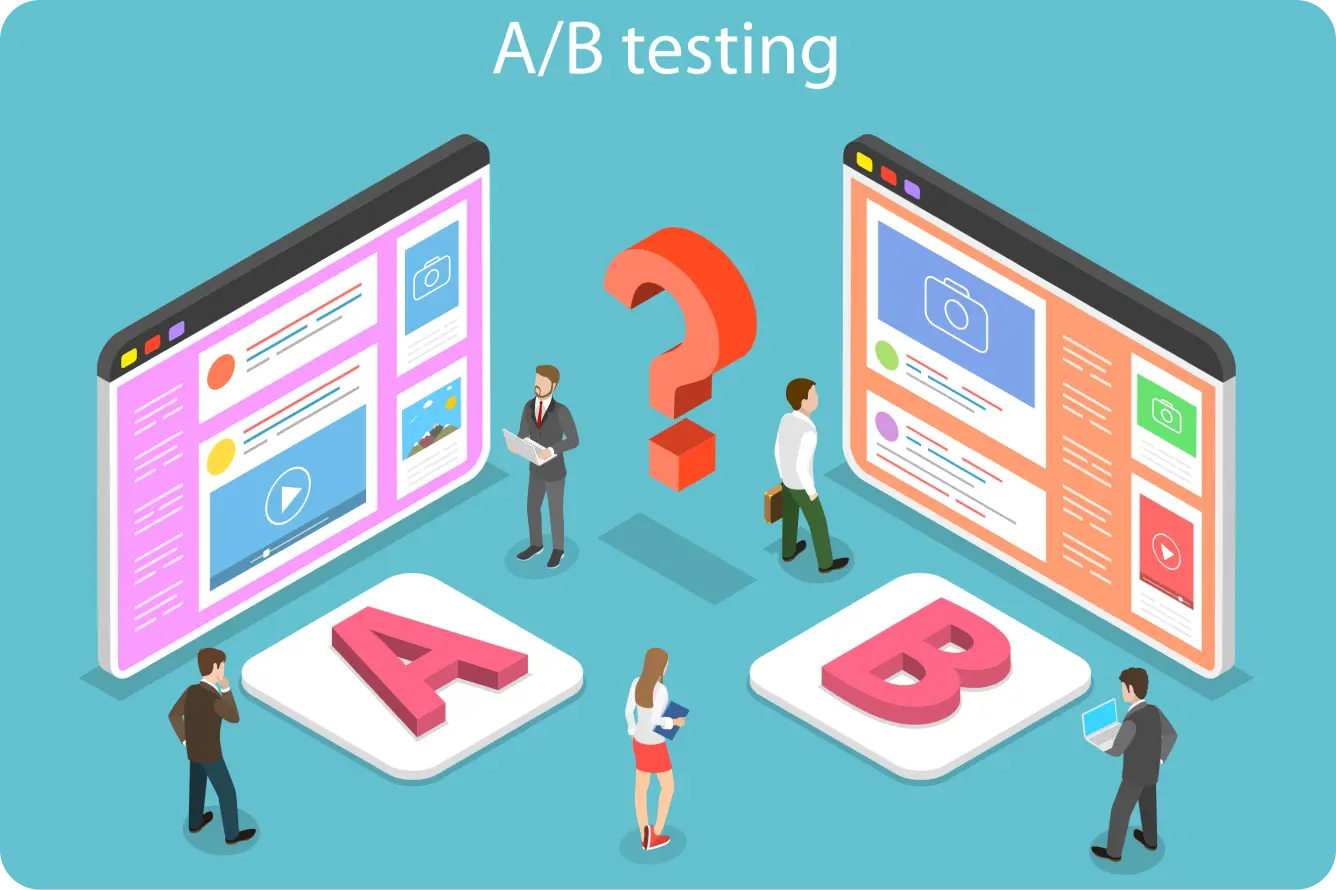Introduction
In the world of digital marketing, running paid ad campaigns on Google searches can boost your lead generation. Paid traffic is crucial for businesses aiming to succeed online, driving new visitors to your website. But how can you determine if these ads are performing well and attracting your target audience? This is where A/B testing comes in handy.
This article delves into the concept of A/B testing and its impact on paid ad traffic. These tactics are essential for reaching the right audience with the right content. Whether you’re a CEO or a marketing executive looking to deepen your understanding of A/B testing in paid ad campaigns, this article aims to offer valuable insights and practical tips to help you grasp its workings.
Paid Traffic

Paid traffic is like paying for a spotlight on the internet’s busiest spots, drawing in people who might buy what you’re selling. It aims to quickly capture people’s attention. These ads can appear on various platforms such as YouTube, Google, Facebook, Twitter, LinkedIn, etc. Paid traffic revolves around the idea that you invest to make your content visible where potential customers are already looking, not necessarily paying per click but for the opportunity to grab their attention. Payment is involved because you’re paying to have your ad displayed to your target audience, likely catching their attention and converting them from visitors to leads.
Incorporating this strategy into your marketing plan is vital for businesses, as it’s a rapid and effective way to gain numerous leads through a single ad.
A/B Testing
Regarding A/B testing, each group comprises individuals with similar interests, not randomly selected, ensuring that any changes made to the ad are attributed to specific adjustments rather than individual differences. Creating two different types of ads and testing them is the best way to attract your target audience’s preferences. It’s a simple yet powerful tool that can enhance your marketing objectives and provide insights into your audience’s content preferences. This helps in future decision-making. This strategy involves showing ad A to one group and ad B to another, keeping in mind both groups share similar activities, interests, and preferences this helps in accurately measuring which ad resonates more effectively allowing you to gather information about your customers’ preferences. Moreover, it helps optimize your budget by determining which ad is more effective, enabling you to allocate your funds wisely. Understanding what resonates best can set your business apart in the competitive realm of online advertising as you attract more traffic and pay less.
Effective Strategies

Utilizing A/B testing to enhance paid traffic through CPC and PPC campaigns is an effective approach to improve your ad’s efficacy. Here are the steps to get you started:
- Decide what to test: You have to first decide what type of element you want to test. For example, the heading, image or the call-to-action button. It is important to do it once at a time to know what change has made a positive effect.
- Create two versions of the ad: Secondly, create two types of ads. Ad A is your original vision, Ad B is where you have changed one element.
- Set your objectives: What would you like to achieve from your test? more clicks, more sales? Know your goal before you begin.
- Divide your audience: Use your ad platform to divide your audience equally.
- Run the test: Launch both your ads at the same time.
- Analyze the results using CTR (Click-Through Rate), Conversion rate, and Cost per conversion: To see which version has performed better.
- Implement and Repeat: Use the winning ad as your new control, and keep testing other variations to see continuous results.
Additional Tips for Effective A/B Testing:
- Start with a hypothesis: Before testing, have a clear hypothesis. For example, changing the CTA button from blue to red will likely increase click-through rates.
- Test one variable at a time: To understand what affected the performance, change one variable at a time.
- Ensure Statistical Significance: Don’t draw conclusions too early. Use enough data to ensure that your results are statistically significant.
- Segment your audience appropriately: Ensure that your audiences for each version of the tests are similar and not randomly selected. This can help confirm that any difference in performance is due to changes you made and not the change in audience.
- Run tests Simultaneously: Run tests A and B at the same time. This ensures that both versions are subject to the same external conditions.
- Be patient and let the test run: Don’t end your test too early. Let it run long enough to gather data.
Conclusion
To sum up, A/B testing helps you get the best results for your ads on Google searches (and other platforms). It’s essential for figuring out what succeeds and what fails. Leveraging paid advertising on social media and Google search can transform visitors into customers, significantly boosting your online visibility. Moreover, employing A/B testing is crucial in identifying the more impactful ad, guiding your future strategies with precision.
Whether you are a CEO or a marketing executive, mastering these techniques can enable the business to expand and thrive in the digital landscape.

